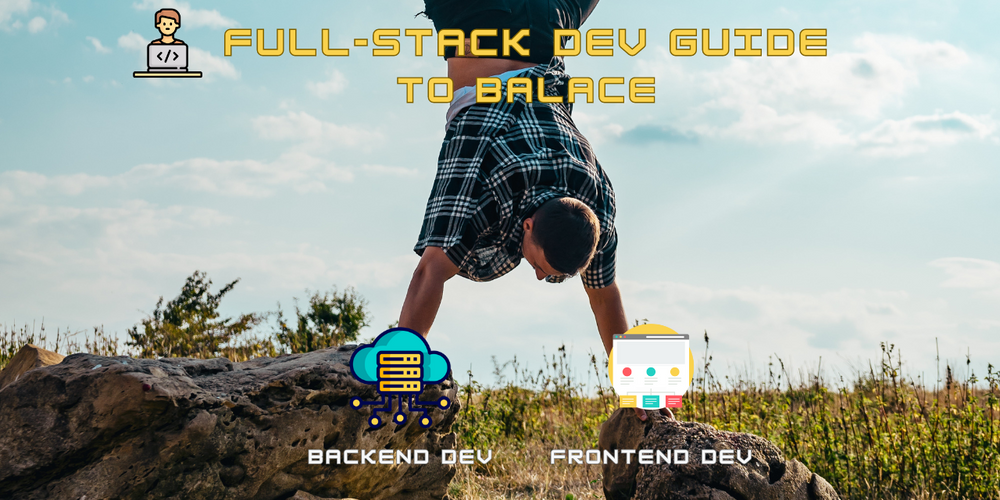Full-Stack Developer's Guide: How to Master Both Front-End and Back-End?

As a full-stack developer, your prowess extends to both the front-end and back-end of web development. Balancing these two worlds effectively is crucial for delivering seamless, high-quality web applications. In this guide, we'll explore strategies to help you harmonize your skills and excel in the realm of full-stack development.
Master Both Worlds
Becoming a proficient full-stack developer means embracing both front-end and back-end technologies. Dedicate time to hone your skills in areas like HTML, CSS, JavaScript (for front-end), and server-side scripting languages like Python, Ruby, or Node.js (for back-end). The mastery of both domains will set a strong foundation for your journey.
Create a Project Roadmap
Before diving into coding, develop a comprehensive project roadmap. Outline the structure and architecture of your application. Define which components require front-end development, such as user interfaces and design elements, and which demand back-end functionality, like server logic and database management. Having a clear plan will streamline your work.
Prioritize Your Tasks
Identify which tasks are front-end-heavy and which are back-end-focused. Prioritizing your workload ensures efficient time management. For instance, if your project heavily relies on user interface design, allocate more time to front-end tasks. Conversely, if data handling and server-side logic take precedence, dedicate your efforts accordingly.
Collaborate and Learn from Peers
Collaboration is key in the world of full-stack development. Engage with other developers, whether through forums, coding communities, or team projects. Sharing insights and experiences with peers can broaden your skill set and expose you to best practices from both front-end and back-end perspectives.
Stay Updated with Technology
Both front-end and back-end technologies evolve rapidly. Make it a habit to stay updated with the latest trends, frameworks, and tools in web development. This knowledge will empower you to leverage cutting-edge solutions for your projects.
Code Efficiency Matters
Efficient coding practices benefit both front-end and back-end development. Write clean and maintainable code to reduce the burden on both ends. Well-structured code enhances collaboration among team members, speeds up debugging, and facilitates future enhancements.
Thorough Testing and Quality Assurance
Testing is a critical phase in full-stack development. Thoroughly test both front-end and back-end components to ensure seamless integration. Automated testing tools and practices can help identify and resolve issues early in the development process.
Time Management is Crucial
Balancing front-end and back-end work requires effective time management. Allocate your time wisely based on project requirements. Use techniques like time blocking to ensure you give equal attention to both aspects.
Embrace Continuous Learning
The tech landscape is ever-changing. Embrace a mindset of continuous learning to excel as a full-stack developer. Enroll in online courses, attend workshops, and explore new technologies to enhance your skill set continually.
Seek Feedback and Iterate
Regularly gather input from users and peers. Feedback provides valuable insights into areas that require improvement. Iterate on your projects based on this feedback to refine your skills further.
Consider Specialization
While full-stack developers possess a broad skill set, you can also consider specialization in either front-end or back-end development based on your interests and career goals. Specialization allows you to dive deeper into one domain while maintaining proficiency in the other.
In the dynamic world of web development, achieving harmony between front-end and back-end work is essential for success as a full-stack developer. By mastering both worlds, prioritizing tasks, collaborating with peers, and staying updated, you can excel in this multifaceted role and deliver outstanding web applications.



